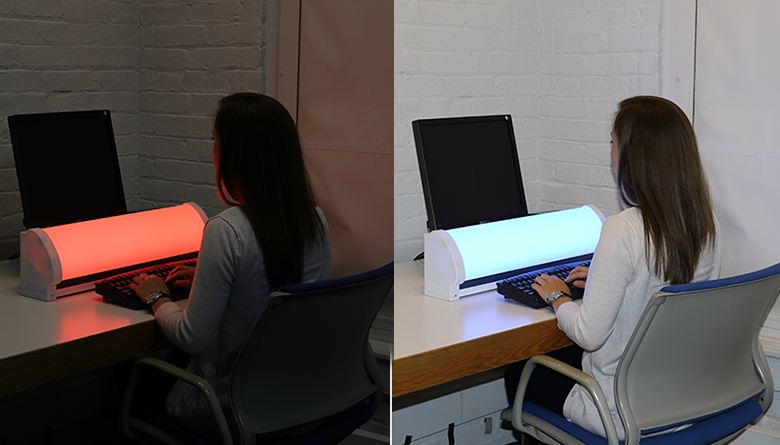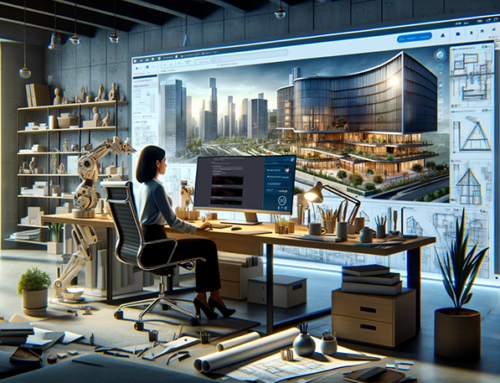By Dana Yamashita
The Lighting Research Center (LRC) recently tested a luminaire — an entire lighting device as opposed to a lamp, which is a replaceable component that produces light — to explore how light impacts alertness during the day and sleep quality at night in daytime office workers.
The three-week study consisted of 19 participants who had luminaires mounted near their computer monitors. The luminaires delivered a morning saturated blue light, a midday polychromatic white light, and an afternoon saturated red light. Each type of light delivered a different circadian stimulus (CS), from the afternoon light with a CS near zero and the morning light with a CS of .04. Objective and subjective measures of rest-activity, sleep, vitality, and alertness were used to evaluate the lighting interventions.
The morning blue light appears to have advanced participants’ circadian rhythms, causing them to wake earlier in the morning. The afternoon red light produced a heightened alerting response close to the post-lunch dip around 3 p.m., reducing subjective sleepiness and increasing vitality and energy.
The study results are the first to demonstrate that red light in combination with ambient white light provides an effective alerting stimulus, and support the inference that light exposures, when properly applied, can promote circadian entrainment and increase alertness.
In previous research, the LRC measured light levels for participants in office buildings designed to maximize daylight availability indoors. The team found that even in offices with many large windows, the workers were not receiving enough light to stimulate their circadian systems during the day, due in part to environmental factors such as cloud cover, season, or desk orientation. By installing circadian-effective light for some of the participants, the results showed that those workers felt much less sleepy, and also reported feeling significantly more energetic and alert.
“Underwriters Laboratories will soon be publishing a Design Guideline for lighting offices, factories and educational facilities aimed at promoting better sleep for day-active, night-inactive occupants of buildings. This study adds even more evidence that bright light during the day promotes and consolidates sleep at night,” said Mark Rea, a professor at the LRC who was one of the study’s authors.




